
GEM-International Journal on Geomathematics
Scope & Guideline
Shaping the Future of Geomathematical Research
Introduction
Aims and Scopes
- Geomathematical Modeling:
The journal prioritizes research that applies mathematical models to understand and solve geoscientific problems, including wave propagation, fluid flow, and material behavior. - Data-Driven Approaches:
A significant focus is on the integration of data science, machine learning, and statistical methods to enhance the modeling and prediction capabilities within geomathematics. - Uncertainty Quantification:
The journal explores methodologies for quantifying and managing uncertainty in geoscientific models, which is critical for reliable predictions in complex systems. - Multiscale Analysis:
Research that involves multiscale approaches to analyze geological processes at various spatial and temporal scales is a core area of interest, reflecting the complexity of geosystems. - Interdisciplinary Applications:
The journal encourages studies that bridge various scientific disciplines, showcasing applications of geomathematics in fields such as hydrology, geology, and environmental science.
Trending and Emerging
- Machine Learning Applications:
There is a notable increase in research utilizing machine learning techniques for modeling and prediction in geosciences, demonstrating the field's shift towards data-driven methodologies. - Uncertainty Modeling and Propagation:
Recent papers emphasize the importance of uncertainty quantification and propagation in geoscientific modeling, reflecting a broader trend towards enhancing model reliability. - Hybrid Computational Techniques:
The trend towards hybrid methods that combine traditional numerical approaches with modern computational techniques, such as deep learning and Bayesian methods, is gaining traction. - Environmental and Climate Studies:
Emerging themes include a focus on environmental and climate-related research, particularly in the context of water resources, sediment transport, and climate change impacts. - Multidisciplinary Collaborations:
There is an increasing trend toward multidisciplinary research that integrates geomathematics with fields such as environmental science, hydrology, and material science, indicating a broader scope of applications.
Declining or Waning
- Traditional Geophysical Methods:
There seems to be a decline in the publication of papers focusing solely on conventional geophysical techniques, as newer methodologies such as machine learning and advanced computational models gain prominence. - Deterministic Inversion Techniques:
Research centered around deterministic inverse methods appears to be waning, possibly due to the increasing interest in probabilistic and data-driven approaches. - Static Models for Geological Analysis:
The reliance on static models for geological processes is decreasing, with a shift towards dynamic modeling that accounts for temporal changes and uncertainties.
Similar Journals
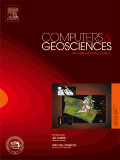
COMPUTERS & GEOSCIENCES
Bridging Earth Science and Technology for a Sustainable FutureCOMPUTERS & GEOSCIENCES, published by PERGAMON-ELSEVIER SCIENCE LTD, is a prestigious academic journal that delivers cutting-edge research at the intersection of computational techniques and geosciences. With an ISSN of 0098-3004 and an E-ISSN of 1873-7803, this journal has been contributing significantly to the field since its inception in 1975 and continues to attract noteworthy articles through 2024. Recognized as a Q1 journal in both the categories of Computers in Earth Sciences and Information Systems, it ranks within the top 12% and 17% of its respective fields according to Scopus. The journal emphasizes innovative applications of computer science in geoscience, providing a platform for researchers to share their findings, methodologies, and advancements. Researchers, professionals, and students dedicated to exploring the computational facets of environmental studies will find this journal to be an invaluable resource.

Mathematical Foundations of Computing
Advancing the Boundaries of Computational MathematicsMathematical Foundations of Computing, published by the American Institute of Mathematical Sciences (AIMS), is a distinguished open-access journal that has been actively disseminating influential research in the fields of Artificial Intelligence, Computational Mathematics, Computational Theory and Mathematics, and Theoretical Computer Science since its inception in 2009. With its E-ISSN 2577-8838, this journal is committed to providing researchers and practitioners with cutting-edge mathematical theories and methodologies that underpin modern computational practices, which is critical for advancing the field. The journal proudly holds a Q3 categorization in several relevant domains as of 2023, reflecting its contribution and accessibility amid an evolving academic landscape. By offering open access to its content, it ensures that vital research is freely available to a global audience, enhancing collaboration and innovation. Positioned in the heart of the United States, Mathematical Foundations of Computing serves as a crucial resource for advancing knowledge and fostering discussions among researchers, professionals, and students passionate about the mathematical underpinnings of computing.

Foundations of Data Science
Pioneering Research for a Data-Driven FutureFoundations of Data Science, published by the American Institute of Mathematical Sciences (AIMS), is a pioneering journal dedicated to advancing knowledge within the ever-evolving fields of data science, mathematics, and computational theory. With an impact factor reflecting its quality and relevance, this journal has established itself as a crucial resource for researchers and professionals alike, achieving remarkable rankings in the Scopus metrics across various mathematical categories, including 35th in Analysis and 70th in Statistics and Probability. The journal, which has been continuously growing in significance since its inception in 2019, focuses on both foundational theories and applied methodologies, providing open access to cutting-edge research from 2024 onward. Its commitment to fostering interdisciplinary collaboration ensures that it remains at the forefront of the data science realm, making it an essential platform for students, scholars, and practitioners aiming to deepen their understanding and contribute to the scientific community.
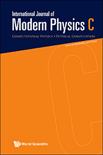
INTERNATIONAL JOURNAL OF MODERN PHYSICS C
Fostering Global Dialogue in Computational TheoryINTERNATIONAL JOURNAL OF MODERN PHYSICS C, published by WORLD SCIENTIFIC PUBL CO PTE LTD, is a pivotal platform for disseminating groundbreaking research in the fields of computational theory, mathematical physics, and statistical physics. With an ISSN of 0129-1831 and an E-ISSN of 1793-6586, this esteemed journal, based in Singapore, serves a global audience of researchers and professionals who are dedicated to pushing the boundaries of knowledge in modern physics. The journal's rigorous selection process ensures the inclusion of high-quality articles that advance the understanding and application of complex theoretical concepts. Currently, the journal holds a commendable Q3 quartile ranking across several categories, including Computational Theory and Mathematics and Statistical and Nonlinear Physics, reflecting its influence and relevance in the academic community. Covering a wide array of topics from 1996 to 2024, the INTERNATIONAL JOURNAL OF MODERN PHYSICS C is not just a repository of research; it is a critical resource for students and scholars aiming to stay at the forefront of modern scientific inquiry.
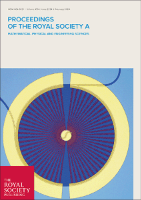
PROCEEDINGS OF THE ROYAL SOCIETY A-MATHEMATICAL PHYSICAL AND ENGINEERING SCIENCES
Advancing the Frontiers of Mathematics, Physics, and Engineering.PROCEEDINGS OF THE ROYAL SOCIETY A-MATHEMATICAL PHYSICAL AND ENGINEERING SCIENCES is a prestigious academic journal published by the Royal Society in the United Kingdom, dedicated to the dissemination of high-quality research in the fields of Mathematics, Engineering, and Physics. With an esteemed impact factor and ranked in the top quartiles (Q1) across various categories, this journal stands out as a leading source of innovative findings and critical discussions within the global scientific community. Researchers benefit from its comprehensive coverage that spans from theoretical explorations to practical applications, and the journal plays a crucial role in advancing knowledge and fostering interdisciplinary collaboration. Although it does not currently offer Open Access options, its influence is underscored by notable Scopus rankings, evidencing its significant contribution to the fields it represents. Located at 6-9 Carlton House Terrace, London SW1Y 5AG, England, the journal continues to be a cornerstone for scholars seeking to publish impactful research and stay informed on the latest advancements in science and engineering.

COMPUTATIONAL MECHANICS
Shaping the Future of Applied Mathematics and EngineeringCOMPUTATIONAL MECHANICS, published by SPRINGER, is a premier international journal that focuses on the intersection of applied mathematics, engineering, and computational methods. With a commendable Q1 ranking in multiple categories, including Applied Mathematics and Mechanical Engineering, this journal is pivotal for disseminating groundbreaking research and innovative methodologies that advance the field. The journal has steadily contributed to the academic community since its inception in 1986 and continues to lead discussions and practices in computational mechanics and related disciplines. With a robust impact reflected in its Scopus rankings—placing it within the top percentiles across various categories—COMPUTATIONAL MECHANICS serves as a crucial platform for researchers, professionals, and students seeking to explore and contribute to significant advancements in computational theory and mathematical applications. Although it does not currently operate under an open access model, the journal ensures wide accessibility through libraries and institutional subscriptions, fostering a rich exchange of knowledge in the global scientific community.
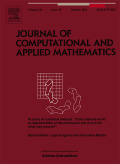
JOURNAL OF COMPUTATIONAL AND APPLIED MATHEMATICS
Pioneering Research in Applied and Computational MathematicsJOURNAL OF COMPUTATIONAL AND APPLIED MATHEMATICS, published by Elsevier, stands as a premier platform for researchers and practitioners in the fields of applied and computational mathematics. With an impressive convergence history from 1975 to 2025, this journal has established itself as a crucial reference point for innovative mathematical theories, methodologies, and applications. Holding a distinguished position in Scopus rankings—#85 out of 635 in Applied Mathematics and #36 out of 189 in Computational Mathematics—it operates in the highly competitive Q2 quartile for both disciplines as of 2023. Although currently not designated as an open-access journal, it remains widely respected for its rigorous peer-review process and high-quality research contributions. Researchers and professionals seeking to advance their work and engage with cutting-edge developments will find this journal an invaluable resource, fostering a deeper understanding and collaboration within the mathematical community.
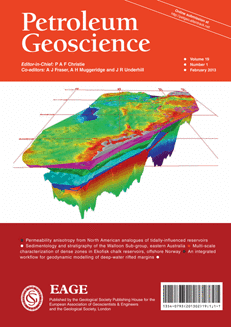
PETROLEUM GEOSCIENCE
Exploring Innovations in Oil and Gas ResearchPETROLEUM GEOSCIENCE is a prestigious journal published by the GEOLOGICAL SOCIETY PUBLISHING HOUSE, catering to the dynamic field of geosciences with a particular focus on petroleum exploration and production. With its ISSN 1354-0793 and E-ISSN 2041-496X, this essential academic resource has been at the forefront of research since its inception in 1995, and is set to continue leading through 2024. The journal has distinguished itself with impressive rankings, achieving Q1 statuses in categories such as Earth and Planetary Sciences (miscellaneous) and Geology, and Q2 placements in Economic Geology, Fuel Technology, and Geochemistry and Petrology for the year 2023. With high recognitions in Scopus rankings, including a 79th percentile in Earth and Planetary Sciences (Geology), it is an invaluable platform for researchers and professionals seeking to share their findings and stay updated on industry advancements. Although not an open-access journal, its rigorous peer-review process ensures that published articles contribute significantly to the ongoing discourse in petroleum geosciences, fostering knowledge exchange and innovation in the field. Researchers from across the globe consider this journal a vital venue for their work, enhancing its reputation and importance in the academic landscape.

Computational and Mathematical Methods
Innovating Solutions Through Computational InsightsComputational and Mathematical Methods is a dynamic peer-reviewed journal published by Wiley-Hindawi, focusing on innovative research in the fields of computational mathematics, mechanics, and theory. Since its transition to an Open Access format in 2022, the journal has enhanced its accessibility to researchers and practitioners globally, providing a platform for the dissemination of high-quality studies that contribute to emerging developments in mathematical modeling and computational techniques. Based in the United Kingdom, this journal is committed to fostering collaboration amongst scholars, evidenced by its rankings within Scopus: Q3 in computational mathematics, computational mechanics, and computational theory and mathematics, reflecting its relevance and influence within these critical fields. With an emphasis on interdisciplinary studies, Computational and Mathematical Methods is an essential resource for researchers, professionals, and students seeking to expand their knowledge and apply cutting-edge methodologies to practical challenges.
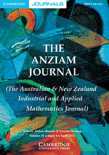
ANZIAM JOURNAL
Connecting Scholars to the Latest Mathematical AdvancesANZIAM JOURNAL, published by Cambridge University Press, serves as a pivotal platform for disseminating high-quality research in the field of mathematics. With an ISSN of 1446-1811 and an E-ISSN of 1446-8735, this journal caters to a diverse audience, including researchers, professionals, and students interested in the latest advances and applications in mathematics, particularly in the miscellaneous category. Having a Scopus rank of #42 out of 90 in its field and sitting at the 53rd percentile, the ANZIAM JOURNAL emphasizes rigorous peer-reviewed research while fostering innovative mathematical discussions. Since its inception in 2000, it has continuously evolved, maintaining a commitment to excellence and accessibility, with open access options available to reach a wider audience. The journal's geographic roots in Cambridge, England, further underscore its prestigious standing in the academic community. Researchers and practitioners alike will find indispensable insights and developments within its pages as it looks toward a vibrant future through 2024 and beyond.